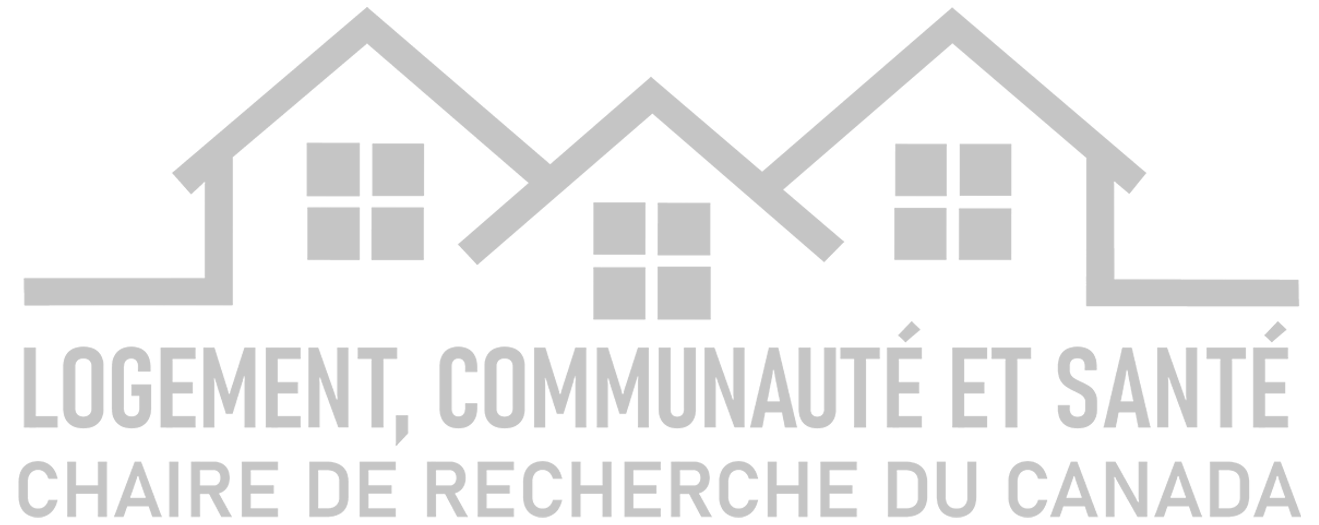Website Glossary
An anyways renovation is one that is imminently needed to preserve a building’s function and avoid irreparable or accelerated deterioration. Our definition for anyways renovations also requires that the building owner has the capacity and a plan to secure and allocate the funds needed to rehabilitate the building in the near future. Anyways renovations represent optimal opportunities for DERs.
In french this word is: La rénovation essentielleGenerally refers to the movement and transformation of carbon within ecosystems, including processes such as carbon uptake, storage, release, and cycling between various forms and reservoirs like the atmosphere, vegetation, soil, and oceans. In a building, carbon dynamics refers to the evolving balance of carbon or CO2 that is absorbed or emitted through its materials and operational emissions over its full lifespan. For example, materials used in a building’s construction may have net positive emissions or net negative emissions. CO2 is also commonly emitted in the process of renovating, operating and dismantling a building. (See embodied carbon, CO2-equivalent, operational carbon and carbon-sequestering materials.)
In french this word is: Dynamique du carboneMaterials are said to be carbon-sequestering when more carbon is removed from the atmosphere in a long-term or permanent manner through their production, extraction, transformation and installation than is emitted. CO2 that is removed from the atmosphere ceases to contribute to global warming. Plants absorb CO2 from the atmosphere through photosynthesis and release it back into the atmosphere when they decompose or are incinerated. This is a critical component of the biological carbon cycle.
In french this word is: Matériaux de stockage du carboneThe IPCC defines CO2-equivalent emission as “the amount of carbon dioxide (CO2) emission that would cause the same integrated radiative forcing or temperature change, over a given time horizon, as an emitted amount of a greenhouse gas (GHG) or a mixture of GHGs.” See https://www.ipcc.ch/sr15/chapter/glossary/ for more details.
In french this word is: Émission d’équivalent-CO2Deep Energy Retrofits are building renovations that generate 50 to 80% reductions in operational energy. Our vision for deep energy retrofits, which we also call Deep Climate Retrofits, also aims to minimize embodied carbon and maximize non-energy benefits and climate resilience.
In french this word is: Rétrofits énergétiques en profondeur (RÉP)The electricity grid is the interconnected network of infrastructure and management systems of power generation facilities, transmission lines, substations, and distribution actors that deliver electricity to meet consumer demand in homes, businesses, and communities. The electricity grid is usually regulated by a governing entity. In Quebec, the electricity grid is owned and operated by Hydro-Québec, a crown corporation, and it is predominantly supplied by hydropower.
In french this word is: Réseau électriqueEmbodied carbon designates the carbon emissions emitted in creating, extracting, producing, transporting and installing materials that go into constructing a building, as well as their disposal at end of life.
In french this word is: Carbone intrinsèqueEnd-of-life processes for a building or infrastructure designate all the processes that must be executed after it ceases to fulfill its function, at what is commonly referred to as the ‘end of service life’ stage. These processes may include site remediation as well as decontamination (hazardous materials), dismantling, removal, sorting, disposal, repurposing and recycling components and materials.
In french this word is: Processus de fin de vieA ‘fabric-first’ approach refers to a design focus on high-performing building enclosures, whether new construction or retrofit. Generally, this means super-insulated, air tight, high-performance doors and windows, and eliminating thermal bridging. The building can then be conditioned using much smaller, ultra high-efficient HVAC (heating, ventilation and air conditioning) systems resulting in greater indoor air quality (IAQ) and comfort. Envelope upgrades for deep energy retrofit are typically from the outside and referred to as ‘over-cladding.’ Fabric first approaches allow for significant energy demand reductions and greater resilience during power outages.
In french this word is: Approche « primauté à l’enveloppe »Greenhouse gases trap heat in the earth’s atmosphere, resulting in warming of the atmosphere and accelerating climate change. Carbon dioxide (CO2) is the most common greenhouse gas emitted through human activities. The building and construction sectors are responsible for roughly 40% of global energy-related CO2 emissions. Other significant greenhouse gases include methane, CFCs and nitrous oxide. Certain categories of refrigerants used to condition buildings also contribute significantly to global warming.
In french this word is: Gaz à effet de serre (GES)Mass DER deployment refers to the widespread adoption and implementation of deep energy retrofits. To realize this rapidly, effectively and at a reasonable cost, substantial development and growth in industrial DER capacity is required.
In french this word is: Déploiement massif de RÉPOperational carbon designates the carbon emissions that result from operating a building during its lifespan. These emissions may occur directly in the building (such as through burning fossil fuels to condition the building or heat domestic water), or they may be generated off-site in producing or transporting electricity that is used on-site to operate the building.
In french this word is: Carbone lié à l’exploitationIn an ‘over-cladding' envelope retrofit, the building is covered with prefabricated insulated panels (see panelized building systems). The approach was refined and put into practice on a mass scale by the Energiesprong program in the Netherlands and later in Europe (see energiesprong.org. The objective is for DERs to be realized quickly on a mass scale, and at a reasonable cost with drastically less inconvenience to inhabitants.
In french this word is: EnveloppementPanelized building systems are an industrialized construction technique in which major building elements such as wall, roof and floor systems are manufactured in a controlled work environment away from the building site (‘off-site’) and then transported to the building site for assembly and installation. This approach allows savings in time, waste and carbon emissions, as well as greater performance and quality control without increased costs. Panelized building systems have become common in new constructions; they can also facilitate retrofits.
In french this word is: Systèmes de construction en panneauxThe pilot to pipeline strategy developed by Reconstruct is based on strategically selecting generalizable, archetypal, and replicable pilot projects to develop solutions and build capacity in DER implementation that can later be applied with minor adaptations to large building clusters or ‘pipelines’ . The identification of these building pipelines can motivate key stakeholders to invest in developing the capacity needed to realize DERs at a massive scale and generate economies of scale.
In french this word is: Stratégie projet pilote – portefeuille de projetsResilience is the capacity of a building, facility, or community to survive difficulties or disastrous events and to recover from any resulting damage or harm. We start from the concept of thermal resilience, which requires that a building provide shelter and minimal air quality and thermal conditions for occupants to stay safe during multi-day power outages.
In french this word is: RésilienceStreamlining is the process of harmonizing workflows by optimizing processes, defining protocols, and overcoming barriers to enhance collaboration, productivity, effectiveness, and overall performance.
In french this word is: RationalisationANSI/ASHRAE defines thermal comfort as “the condition of mind that expresses satisfaction with the thermal environment“ (ANSI/ASHRAE Addendum to ANSI/ASHRAE Standard 55-2017). Thermal comfort has physical, psychological and affective dimensions. It is influenced by physical factors such as temperature, humidity, air circulation, and indoor air quality, the level of clothing and activity of occupants and recent and longer term indoor and outdoor conditions. It is also influenced by factors such as culture and the level control an occupant has or perceives themselves to have over their environment. It affects the health, well-being, and productivity of individuals and is vital to occupant satisfaction in residential and workplace environments.
In french this word is: Confort thermiqueTransdisciplinary research spans different fields (see Pierre Bourdieu), methods and languages. To do this effectively, it is often necessary to listen first and speak second or sparingly. Transdisciplinary research acknowledges that design and building adaptations are enmeshed in complex sociocultural inequities and the climate crisis, requiring input from diverse and sometimes conflicting stakeholders.
In french this word is: Transdisciplinaire
This page provides definitions of key words and concepts we use to understand and communicate our work and the issues we engage with. These definitions are not universal or absolute but represent our current understanding of these terms and what they convey in the context of building decarbonization. We plan to add terms to this glossary and refine the definitions as our work progresses.
Discover Our Collaborators








- Arrondissement de l’Île-Bizard—Sainte-Geneviève
- Société d’habitation du Québec
- Building decarbonization alliance
- Pembina institute
- Québec BVI – Bâtiment vert et intelligent
- ReCover Initiative
- Retrofit Canada
- The Atmospheric Fund (TAF)
- Transition Accelerator
- Zero Emissions Innovation Centre
- If Then Architecture Inc.
- Minotair Inc.
- RG Solutions
